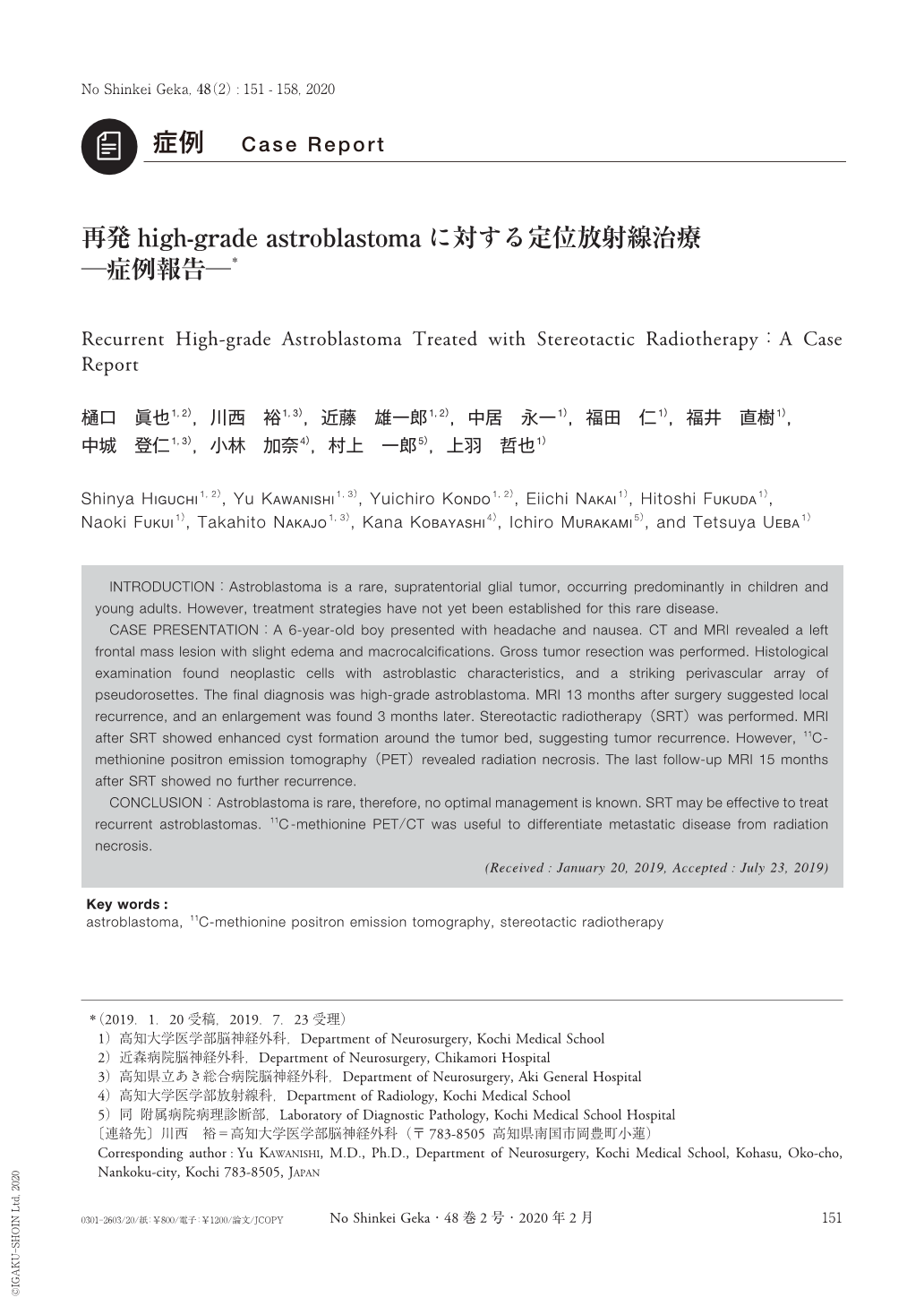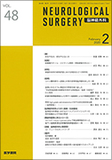Japanese
English
- 有料閲覧
- Abstract 文献概要
- 1ページ目 Look Inside
- 参考文献 Reference
Ⅰ.はじめに
Astroblastomaは神経膠腫の0.45〜2.8%で発生する稀少な脳腫瘍であり,小児から若年成人の大脳半球に好発する11).手術での摘出率が再発や予後に関与することは示唆されているが,術後の補助療法や再発時の治療方針は確立されていない.今回われわれは,定位放射線治療(stereotactic radiotherapy:SRT)が有効であった再発high-grade astroblastoma症例を経験したので報告する.
INTRODUCTION:Astroblastoma is a rare, supratentorial glial tumor, occurring predominantly in children and young adults. However, treatment strategies have not yet been established for this rare disease.
CASE PRESENTATION:A 6-year-old boy presented with headache and nausea. CT and MRI revealed a left frontal mass lesion with slight edema and macrocalcifications. Gross tumor resection was performed. Histological examination found neoplastic cells with astroblastic characteristics, and a striking perivascular array of pseudorosettes. The final diagnosis was high-grade astroblastoma. MRI 13 months after surgery suggested local recurrence, and an enlargement was found 3 months later. Stereotactic radiotherapy(SRT)was performed. MRI after SRT showed enhanced cyst formation around the tumor bed, suggesting tumor recurrence. However, 11C-methionine positron emission tomography(PET)revealed radiation necrosis. The last follow-up MRI 15 months after SRT showed no further recurrence.
CONCLUSION:Astroblastoma is rare, therefore, no optimal management is known. SRT may be effective to treat recurrent astroblastomas. 11C-methionine PET/CT was useful to differentiate metastatic disease from radiation necrosis.

Copyright © 2020, Igaku-Shoin Ltd. All rights reserved.


